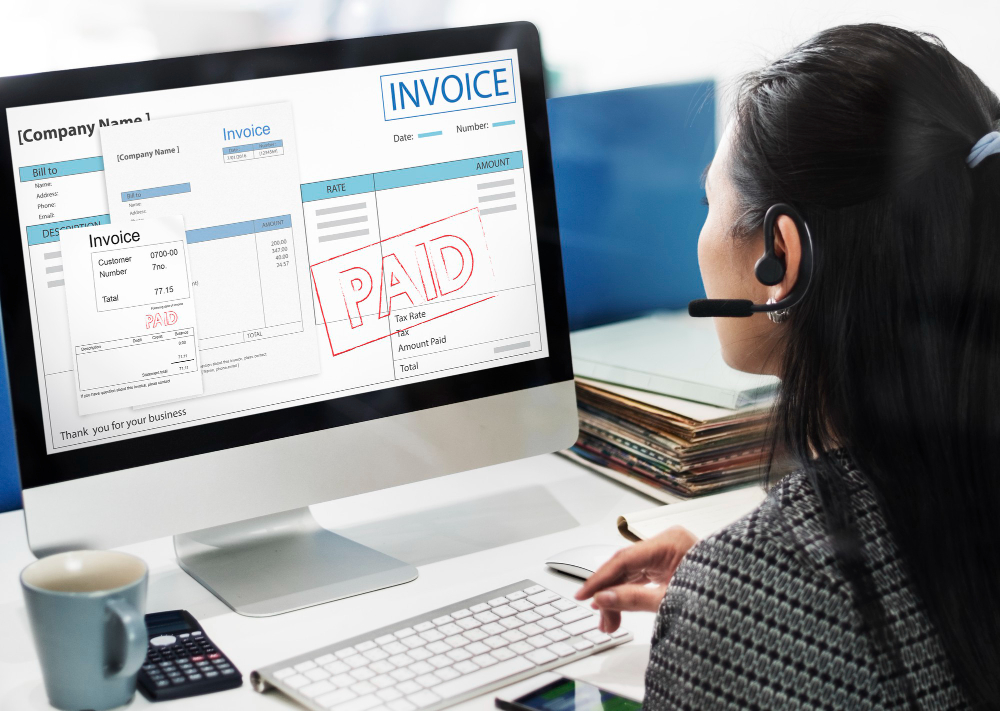Making Money as a Freelance Designer And Saving It

Many freelancers dream of freelancing full-time, and it’s easy to understand why. You get to choose the projects you want to work on, and you have control over how much you charge for your services. However, freelance designers encounter specific challenges when trying to build and expand successful careers.

In addition to completing client work, freelancers must manage operational and administrative tasks regularly. This includes marketing their services, bringing in new clients, and handling basic accounting like sending invoices, paying bills, and tracking cash flow.
Despite these challenges, the business aspects of freelancing don’t have to be intimidating if you establish simple systems and a growth strategy. Use this guide to create efficient practices and automate recurring tasks, enabling you to consistently expand your business and increase your income over time.
Pricing Tips for Creative Professionals
Deciding how much to charge for your creative work can be tough, especially if you’re new to freelancing. Here are some common questions and strategies to help you navigate this challenge.
When you’re starting out, many freelancers prefer charging by the hour. Here’s how to calculate your hourly rate: First, figure out how much you want to earn in a year. Let’s say you aim for $130,000 annually, like a freelance graphic designer or photographer.
Next, add up your business expenses. Think about what you need, like new equipment or software. For a graphic designer or photographer, that might be around $20,000. So, your new salary goal would be $130,000 + $20,000 = $150,000.
Don’t forget taxes and insurance. As a freelancer, you handle these costs yourself. Finally, divide your target earnings by how many hours you plan to work in a year. For our creative professional, it might be $150,000 divided by 1,500 hours, which equals at least $100 per hour. Look into your local market to set a competitive rate.
Alternatively, you can charge a flat fee for each project. This means setting a fixed price based on the project's requirements, regardless of how long it takes you.

If the project has clear goals, estimate how many hours you’ll need and use that to determine your fee. But if it’s a bit unclear or likely to change, charging hourly might be safer to ensure fair payment.
As you spend more time working in your field, you gain valuable experience. Over time, you may become more specialized, and specialists usually earn more than those who do general work. When you invest in advanced training, learn new skills, or take on more challenging projects, you should consider raising your rates to reflect the higher value of your services.
For example, let's say after a year of freelancing, you've honed your graphic design skills and collaborated on multiple projects that received praise from clients for their creativity and effectiveness. Say, you took a certification from Adobe or Google, and got a few clients. This growth in your abilities and positive client feedback could be strong indicators that you're ready to raise your rates and highlight the increased value you bring to your work.
Handling money convos
Handling money conversations with clients effectively is crucial for freelance success. It requires clear communication, professionalism, and the ability to address financial matters with confidence and tact.
Here's a brief guide on how to navigate these discussions to ensure mutual understanding and satisfaction throughout your freelance projects.
- Set Clear Payment Terms Upfront: Clearly outline your payment terms in your contract or agreement before starting any work. Specify the rates, payment schedule, and accepted payment methods.
- Be Transparent: Discuss your rates and fees openly with clients. Explain what is included in your services and any additional costs they might incur.
- Provide Detailed Estimates: When providing project estimates, break down costs and explain how you arrived at the total amount. This helps clients understand the value they are receiving.
- Discuss Budgets Early: Understand your client's budget constraints early in the conversation. This allows you to tailor your services and offerings accordingly.
- Address Money Matters Professionally: Approach money discussions with professionalism and confidence. Be prepared to negotiate if needed but also stand firm on your rates if they are justified.
- Use Clear and Polite Language: Use clear and polite language when discussing money matters. Avoid jargon or ambiguous terms that could lead to misunderstandings.
- Handle Delicate Conversations Tactfully: If discussing overdue payments or late fees, be diplomatic but firm. Remind clients of the agreed-upon terms and seek to resolve any issues amicably.
- Follow Up in Writing: After any money-related discussions, summarize the key points in writing (email or contract) to ensure both parties have a clear record of the agreement.
- Be Flexible Where Possible: While it's important to uphold your financial policies, be open to reasonable requests and show flexibility when appropriate to maintain good client relationships.
- Maintain Professionalism Throughout: Regardless of the conversation's outcome, maintain professionalism and courtesy. Good money management often hinges on fostering positive client relationships.
Basic Accounting for Freelancers

Here's a simplified guide to basic accounting for freelancers:
- Keep Your Finances Separate: Treat your freelancing like a real business. Set up a separate bank account for your work. This makes it easier to see how much money you're making and spending without mixing it up with your personal finances.
- Be Financially Smart: Don't use your business money for personal expenses. Having a separate account helps you keep track of your earnings and costs.
- Create an Emergency Fund : Freelancers don't always get paid regularly. It's smart to save up money for emergencies. Try to build up enough to cover at least three months of your living expenses. This way, you won't have to worry if work slows down or a client pays late.
- Use the Right Payment Tools : Personal payment apps like Venmo or Cash App aren't great for business. They lack the benefits that business-focused platforms provide. Look for tools like Paypal, Swipe, Wise, Hopscotch, designed for businesses, which allows you to send and receive payments instantly without fees. You can also manage invoices and keep track of everything easily in one place.
Boost Your Freelance Cash Flow: Practical Strategies to Ensure Financial Stability
Here are some practical cash flow hacks for freelancers:
- Invoice Promptly and Clearly : Send out your invoices promptly after completing your work. Clearly outline the services provided, payment terms, and due date. This encourages clients to pay on time and keeps cash flowing into your business consistently.
- Offer Early Payment Discounts : Encourage faster payments by offering a small discount to clients who pay before the due date. This can incentivize clients to settle their invoices sooner, improving your cash flow.
- Set Up Recurring Payments: Establish recurring payment arrangements with clients for ongoing projects or services. This ensures a predictable stream of income at regular intervals, smoothing out your cash flow and reducing uncertainty.
- Negotiate Payment Terms : Negotiate favorable payment terms with clients, such as shorter payment cycles (e.g., net-15 instead of net-30) or upfront deposits for large projects. Clear communication about payment expectations can help you maintain a healthy cash flow.
- Diversify Your Income Streams : Explore multiple revenue streams within your freelance business. Offering different services or products can help stabilize your cash flow, especially during seasonal fluctuations or slow periods in one area of your business.
- Manage Expenses Wisely : Keep a close eye on your expenses and look for opportunities to reduce costs without sacrificing quality. Negotiate better rates with suppliers or explore more cost-effective tools and resources to optimize your spending.
- Build Relationships with Clients: Cultivate strong, professional relationships with your clients based on trust and reliability. Happy clients are more likely to pay on time and recommend your services to others, leading to a more consistent cash flow.
Plan on How Taxes Affect You

Planning for how taxes impact you as a freelancer is crucial for maintaining financial stability and compliance. Here's a breakdown of key considerations:
- Understand Your Tax Obligations: As a freelancer, you're responsible for paying taxes on your income. This includes federal income tax, self-employment tax (Social Security and Medicare), and potentially state and local taxes. Learn about the tax rates applicable to your income level and jurisdiction.
- Track Your Income and Expenses : Keep detailed records of your freelance income and business expenses throughout the year. This will help you accurately report your earnings and claim deductions when filing your taxes.
- Set Aside Estimated Taxes: Unlike traditional employees who have taxes withheld from their paychecks, freelancers typically make quarterly estimated tax payments directly to the IRS. Calculate your estimated tax liability and set aside funds regularly to avoid facing a large tax bill at the end of the year.
- Take Advantage of Deductions: Identify and claim eligible business deductions to reduce your taxable income. Common deductions for freelancers include home office expenses, equipment purchases, professional development costs, and health insurance premiums.
- Consider Retirement Savings: Plan for your future by contributing to retirement accounts suitable for self-employed individuals, such as a Simplified Employee Pension (SEP) IRA or a Solo 401(k). Not only do these contributions reduce your taxable income, but they also help you build long-term financial security.
- Consult with a Tax Professional: Tax laws and regulations can be complex, especially for freelancers with varying income sources and deductions. Consider working with a qualified tax professional who specializes in self-employment taxes to ensure compliance and maximize tax savings.
- Stay Organized Year-round: Develop a system for organizing your financial documents and receipts to streamline tax preparation. Use accounting software or apps designed for freelancers to track income, expenses, and tax-related transactions efficiently.
Best Practices for Optimizing Invoicing Processes

Optimizing your invoicing process as a freelancer is essential for maintaining cash flow and ensuring timely payments. Here are some best practices to streamline and improve your invoicing workflow:
- Use Professional Invoicing Software: Invest in reputable invoicing software designed for freelancers. These tools offer customizable invoice templates, automated reminders, and payment tracking features to simplify the invoicing process and save you time.
- Standardize Invoice Templates: Create standardized invoice templates that reflect your brand identity and include all necessary details such as your business name, contact information, client details, invoice number, payment terms, itemized services or products, rates, and total amount due. Consistent templates enhance professionalism and clarity.
- Set Clear Payment Terms: Clearly outline your payment terms on every invoice, including due dates, accepted payment methods, and any late payment penalties. This helps manage client expectations and encourages prompt payments.
- Invoice Promptly and Regularly: Send out invoices promptly after completing a project or reaching a milestone. Establish regular billing cycles (e.g., biweekly or monthly) to maintain a steady cash flow and improve predictability.
- Automate Recurring Invoices: For recurring clients or ongoing services, automate the creation and delivery of recurring invoices. This minimizes manual effort and ensures that you never miss billing for regular work.
- Follow Up on Overdue Payments: Implement a system for tracking overdue invoices and sending automated payment reminders at predefined intervals. Personalized follow-up emails or calls can also help expedite late payments while maintaining client relationships.
- Offer Multiple Payment Options: Provide clients with convenient payment options such as credit/debit cards, bank transfers, or digital wallets. Consider using online payment platforms that streamline transactions and offer secure payment processing.
- Keep Detailed Records : Maintain organized records of all invoices, payments, and client communications. This documentation is valuable for tracking financial performance, resolving disputes, and preparing tax returns.
- Review and Improve: Regularly review your invoicing process to identify bottlenecks or areas for improvement. Solicit feedback from clients to gauge satisfaction with your billing practices and adjust accordingly.
- Stay Compliant with Tax Regulations: Stay informed about tax obligations related to invoicing and ensure compliance with relevant regulations. Consult with a tax professional to optimize tax planning and minimize tax liabilities.
Power of Automation for Freelancers to Streamline Your Business and Get Paid Efficiently
Automation is a game-changer for freelancers, allowing you to navigate financial transactions seamlessly while focusing on growth and sustainability. By leveraging automated processes, you'll reclaim valuable time and energy to concentrate on revenue-generating activities, nurturing client relationships, and refining your craft.
Step 1: Identify Automation Opportunities
Start by pinpointing tasks that can be automated to minimize errors, reduce manual intervention, and require minimal setup. Consider automating:
- Templatized Invoicing: Standardize invoice formats and automate their delivery based on project milestones or recurring schedules.
- Automated Bill Payments: Schedule regular payments for subscriptions, utilities, and other recurring expenses to ensure timely payments without manual intervention.
- Streamlined Client Onboarding: Automate client intake processes, such as sending welcome emails, gathering information, and scheduling initial consultations.
- Standardized Workflows: Implement workflow automation tools to streamline project management, task assignments, and communication with clients.
- Productized Services: Package and automate service offerings into standardized packages for easier marketing and sales.
Step 2: Implement Automated Solutions
Once you've identified automation opportunities, research and select the best platforms or tools to integrate into your workflow. Invest time upfront to set up these systems to ensure smooth operations:
- Invoicing Platforms: Use invoicing software that allows for template customization, automated reminders, and seamless payment processing.
- Payment Automation Tools: Utilize apps or services that automate bill payments and expense tracking to maintain financial discipline.
- Client Relationship Management (CRM) Software: Implement CRM systems to automate client communication, project tracking, and follow-up tasks.
- Workflow Automation Tools: Explore project management platforms with built-in automation features to streamline task assignment, progress tracking, and collaboration.
Step 3: Reinvest in Your Freelancing Business
As automation optimizes your business processes, reinvest the time and resources saved into furthering your freelancing career:
- Expand Your Client Base: Dedicate time to networking, marketing, and prospecting to attract new clients and expand your business reach.
- Skill Development: Invest in professional development to acquire new skills that enhance your service offerings and differentiate you in the market.
- Marketing Initiatives: Launch targeted marketing campaigns or revamp your website to showcase your automated workflows and superior client experience.
Freelancing without a clear financial plan is like setting off on a trip without a map. You might end up going in circles, missing important goals, or feeling lost along the way. But if you set up some simple systems, you can keep track of how you're doing and make changes as you grow. Keep tweaking your freelancing approach to find what suits you best—it's your business, and you're in charge!
Join the community of thousands of other freelancers and creative professionals at World Design Council.
